Now that you have some new ink, you’re eager to jump in the pool. How can you swim with a fresh tattoo? Even though you’re not supposed to get it wet, is there a way to make your tattoo waterproof for swimming?
The good news is that you can protect your tattoo while swimming. The best way to do this is to wait until it is completely healed. This usually takes about two weeks. Once it is healed, you can apply waterproof sunscreen to it before going in the water. This will help to prevent the tattoo from fading.
If you want to swim sooner than two weeks, you can try using a tight bandage or plastic wrap over the tattoo. This will help to keep the water out and protect the tattoo. Just be sure to remove the bandage as soon as you get out of the water so that your skin can breathe.
Summer is just around the corner, and that means it’s time to start thinking about all of the fun things you’re going to do! One of our favorite summer activities is swimming, but if you have a new tattoo, you might be wondering how long you need to wait before hitting the pool. In this blog post, we will discuss how long after getting a tattoo you can swim and provide some tips for keeping your new ink looking its best!
Why Can’t I Get My New Tattoo Wet:
Risk Of Infection
The risk of infection is highest during the first two weeks after getting a tattoo. This is because the area is still healing and the skin is more vulnerable to bacteria [1].
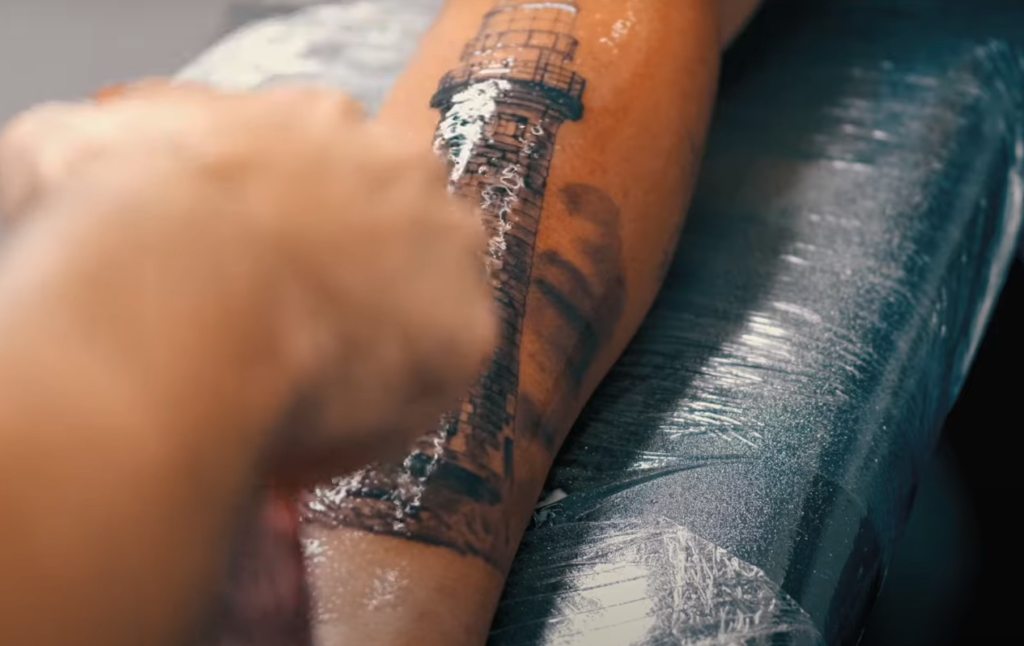
Although uncommon, sepsis and death are possibilities. Chlorine doesn’t kill all the germs in a pool as effectively as it does in open water, such as a lake or sea.
Damage To Your Tattoo
The main reason you shouldn’t swim too soon after getting a tattoo is that it can seriously damage your tattoo. When you get a tattoo, the artist applies ink to the middle layer of your skin, called the dermis. This is where the cells that give your skin its color, called melanocytes, reside. The ink goes into the dermis, which is why tattoos are permanent.
However, this also means that when you expose your tattoo to water shortly after getting it, there’s a chance that the ink can be pulled out of your skin. This can cause the lines of your tattoo to blur and fade and will require touch-ups or even completely redoing the tattoo. In short: it’s not worth the risk!
If you must swim soon after getting a tattoo, make sure to cover it with a waterproof bandage or plastic wrap. This will help protect your tattoo from the water and keep the ink in place. Make sure the bandage or wrap is tight against your skin so that no water can get underneath it. And, of course, remember to take it off as soon as you’re out of the water!
Skin Irritation
Most people can swim after a tattoo without any problems. However, if your skin is still healing and feels irritated, it’s best to wait until the irritation has subsided before getting in the water. Not only is skin irritation unpleasant, but it can also increase your risk of developing other serious skin conditions.
Chlorine and other chemicals can cause pain or irritation for people with new tattoos. This happens when chemicals like chlorine penetrate the skin and trigger inflammation [2].
How To Tell If Your Tattoo Has Fully Healed?
If you’re wondering how to tell if your tattoo has fully healed, there are a few things you can look for:
- The first is that the tattoo will no longer be sensitive to touch;
- Secondly, the tattoo will have lost its shiny, wet appearance and will instead look more matte;
- The third is that the tattoo will no longer be susceptible to picking up dirt and other debris;
- Finally, the skin around the tattoo should no longer look red or inflamed;
The length of time required to heal a tattoo is highly dependent on the location and size of the piece. A tattoo could take anywhere from 2 to 4 weeks to complete healing [3].
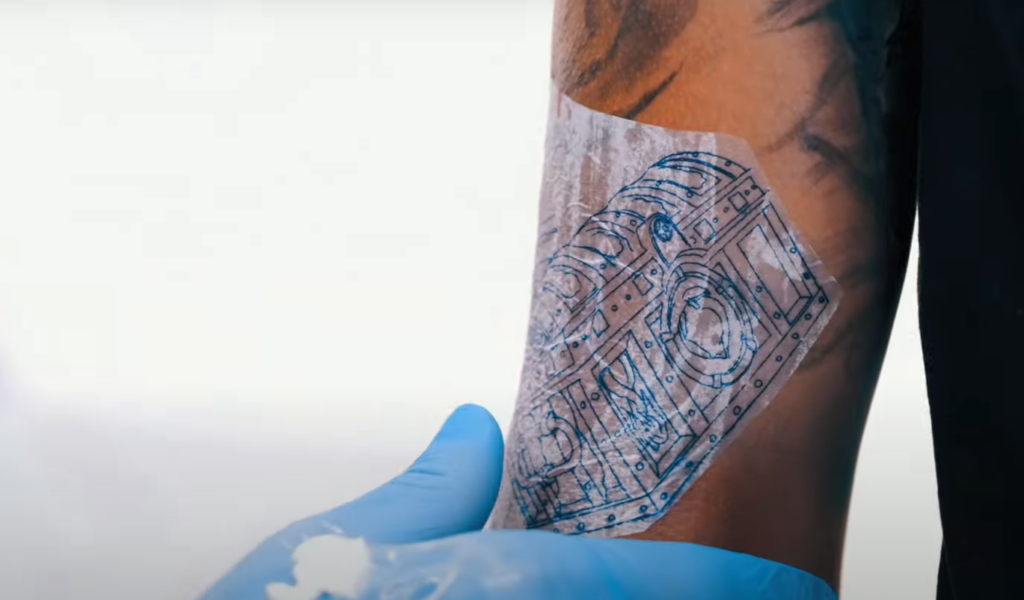
How Long Before You Can Swim With A New Tattoo?
The time needed for a tattoo to completely heal varies depending on the individual, but most tattoo artists suggest waiting two to four weeks before swimming.
A bandage will be placed over your tattoo after you have it done. You’ll be able to remove the bandage and wash away the blood and ink after a few hours. Wash it gently with warm water and antibacterial soap, then allow it to dry in a clean location while you apply the following care cream [4].
Until you are fully healed, avoid taking baths for the same reason as before. Gently cleanse the area, let air dry, and apply aftercare cream to prevent any further irritation.
How Can I Waterproof A Tattoo For Swimming:
Apply A Waterproof Dressing
If you plan on swimming soon after getting a tattoo, your best bet is to cover the area with a waterproof dressing. This will protect your tattoo from the water and help it heal properly. You can find waterproof dressings at most pharmacies or online.
Make sure to follow the instructions on the packaging carefully and apply the dressing correctly. If you’re not sure how to do this, ask your tattoo artist for help.
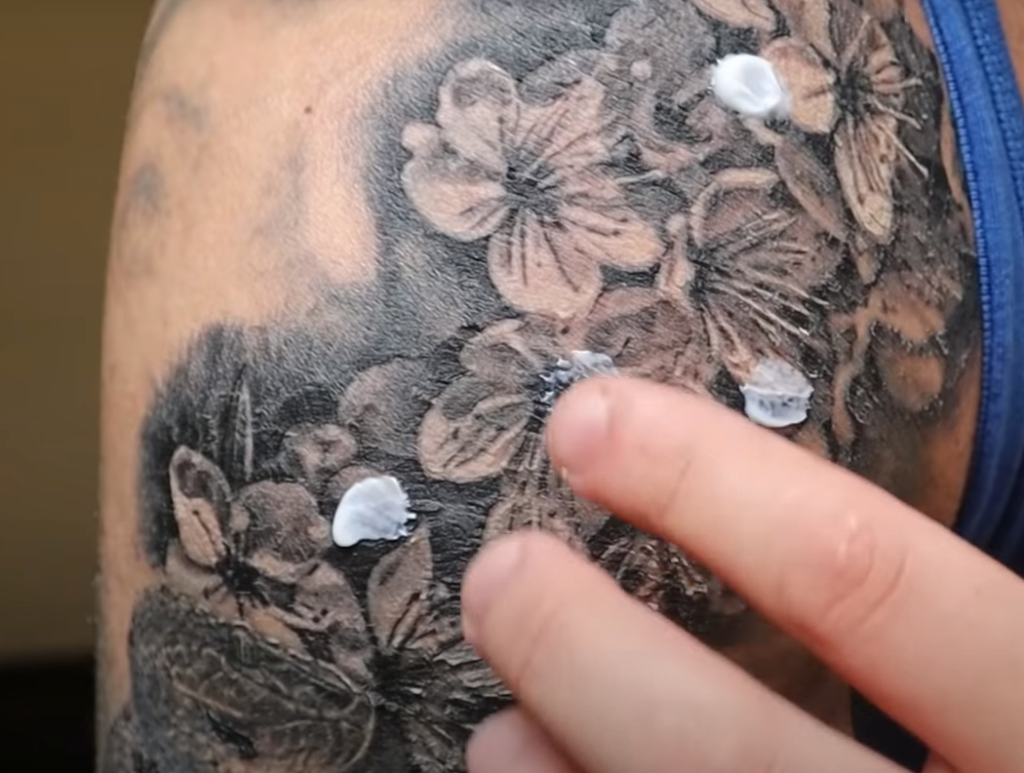
If you can’t wait that long, or if you’re going to be swimming in salt water, make sure to apply a thick layer of sunscreen over the tattoo before getting in the water. This will help protect it from the sun and salt.
Clean The Tattoo As Soon As You’re Done Swimming
As soon as you’re done swimming, it’s important to clean your tattoo. This will help remove any bacteria or debris that may have gotten into the wound.
Start by gently rinsing the area with clean water. You can use mild soaps if necessary, but be sure to avoid harsh chemicals and fragrances. Gently pat the tattoo dry with a clean towel.
Apply a thin layer of moisture to the tattooed area. This will help keep the skin hydrated and prevent the tattoo from drying out. Use a fragrance-free lotion or ointment for this step. Avoid using Vaseline, as it can trap bacteria in the wound and delay healing.
What Happens If I Already Went Swimming With A New Tattoo?
If you already went swimming with a new tattoo, don’t panic. There’s a good chance that your tattoo is just fine. However, it’s important to keep an eye on it for the next few days and take extra care of it to ensure that it heals properly [5].
If you notice any redness, swelling, or other signs of irritation, be sure to contact your tattoo artist or doctor as soon as possible. In most cases, these symptoms are nothing to worry about and will clear up on their own. However, if they persist or worsen, they could be indicative of an infection.
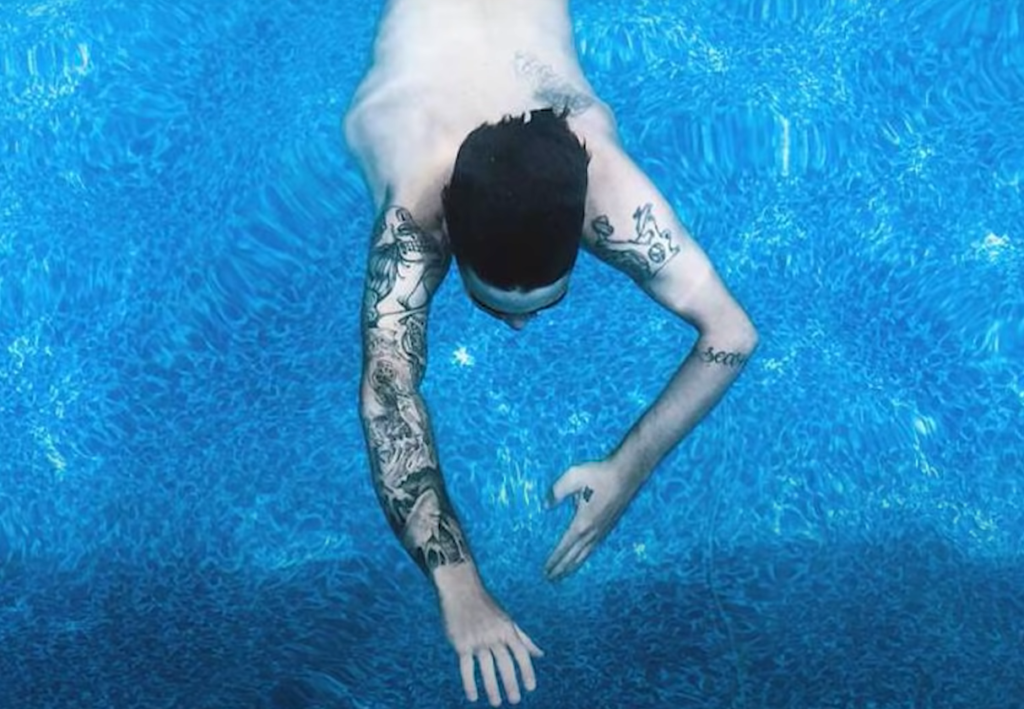
Can You Swim In Pools After Getting A New Tattoo?
The answer to this question is both yes and no. On one hand, you can technically swim in pools after getting a new tattoo. However, it’s not recommended as swimming in chlorinated water can irritate your healing tattoo.
If you do decide to go swimming in a pool with a new tattoo, make sure to protect your tattoo by covering it with a waterproof bandage or plastic wrap. You’ll also want to avoid letting the chlorine water dry on your skin, so make sure to rinse off and moisturize your tattoo afterward.
It’s generally best to wait until your tattoo is fully healed before taking a dip in the pool. This usually takes about two weeks but can vary depending on the size and location of your tattoo. If you have any doubts, it’s always best to ask your tattoo artist before diving in.
Can You Swim In The Sea With A New Tattoo?
The short answer is yes, but a few things you should keep in mind:
- First of all, it’s important to wait until your tattoo is completely healed before going for a swim. This usually takes about two weeks;
- Secondly, make sure to put sunscreen on your tattoo before hitting the beach or pool – otherwise, you risk damaging your new ink;
- Finally, avoid swimming in salt water or chlorinated pools as this can irritate your tattoo and cause it to fade prematurely;
Can You Take A Bath With A New Tattoo?
Most artists will tell you that you shouldn’t submerge your new tattoo in water until it’s completely healed. However, that doesn’t mean you can’t take a bath with a new tattoo! You just need to be careful and take some precautions.
Here are a few things to keep in mind when bathing with a new tattoo:
- Avoid hot water. Hot water can damage your new tattoo and cause it to heal poorly. Stick to lukewarm or cool water instead;
- Gently clean the area. When you’re ready to clean your tattoo, use mild soap and gentle pressure. Avoid scrubbing the area, as this can also damage the healing skin;
- Pat dry. Once you’ve finished cleaning your tattoo, gently pat it dry with a clean towel. Avoid rubbing the area, as this can irritate the healing skin;
- Apply moisturizer. After you’ve dried your tattoo, apply a thin layer of unscented lotion or ointment to keep the area hydrated. Be sure to follow your artist’s instructions on how often to moisturize;
Can You Shower With A New Tattoo?
Yes, you can shower with a new tattoo, but be very careful. Avoid letting the water hit your tattoo directly for at least two weeks. After that, you can start gently washing it with soap and water. Be sure to pat it dry afterward.
Showering with a new tattoo is not only acceptable; it’s also required by health regulations. Showering shouldn’t influence your new tattoo’s healing process if you follow the aftercare instructions supplied by your artist and avoid rubbing or immersing your tattoo [6].
FAQ:
- Can I go swimming 10 days after a tattoo?
To avoid infection, wait at least 2-4 weeks after getting a tattoo before swimming. This gives your skin time to heal and the tattoo ink time to set [7].
If you must swim sooner than that, cover your tattoo with a waterproof bandage or plastic wrap before getting in the water.
Keep the tattoo clean and dry while it heals. After swimming, wash the area with soap and water and apply a layer of antibiotic ointment to keep the tattoo moist.
- Is it ok to swim with a week-old tattoo?
Most tattoo artists will give you aftercare instructions that include keeping your tattoo dry for at least a week. This means no swimming, baths, hot tubs, or soaking in the tub.
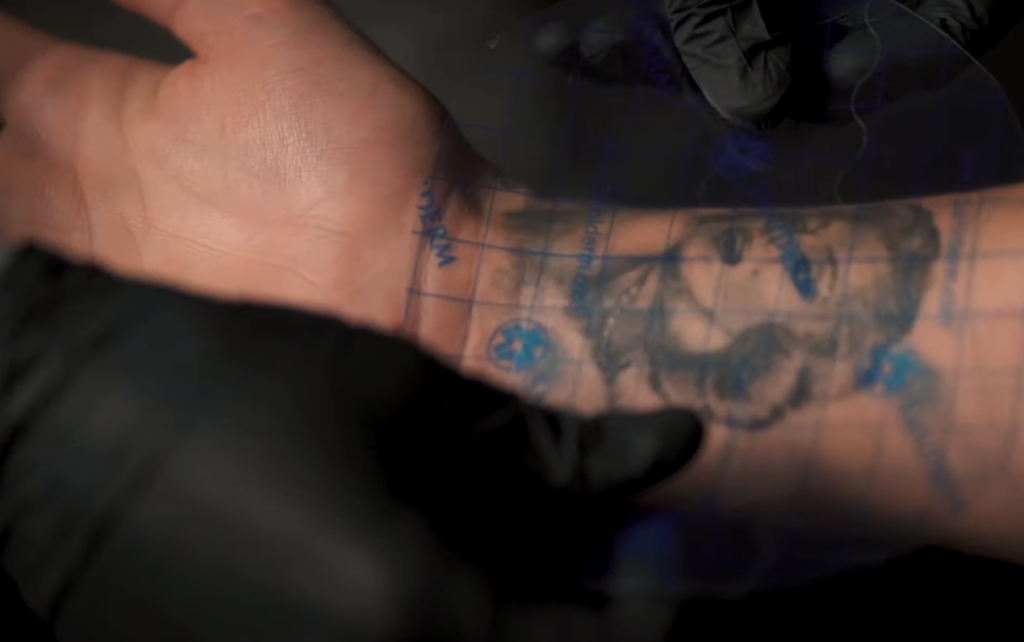
- Can you put Vaseline on a new tattoo to go swimming?
No, you should not put Vaseline on a new tattoo to go swimming. Tattoos need to be kept clean and dry in order to heal properly. Water can cause infection and irritation in a new tattoo, so it’s best to avoid swimming until your tattoo has fully healed.
After your tattoo has healed, you can protect it from the sun and chlorine by applying sunscreen and wearing a rash guard or swim shirt.
If you do get your new tattoo wet, make sure to pat it dry gently with a clean towel. Do not rub or scrub your tattoo, as this can damage the skin and cause scabbing. If you notice any redness, swelling, or discharge from your tattoo, contact your doctor or dermatologist.
- Can I have a bath 10 days after a tattoo?
The short answer is no. Even though it may seem like the perfect way to relax after getting a tattoo, you should avoid taking baths for at least two weeks. Soaking your tattoo in water can cause the ink to fade and may lead to infection. If you must take a bath, make sure to keep the area clean and dry afterward.
If you’re looking for something to help ease the itchiness that comes with healing tattoos, try using a cold compress or taking an oatmeal bath. Both of these methods can help soothe your skin without causing any damage.
Of course, you’ll also want to avoid swimming during this period as well. Not only is there a risk of infection, but chlorine can cause the ink to fade. If you must go swimming, make sure to protect your tattoo with a waterproof bandage or sunscreen.
- Does chlorine fade tattoos?
Fresh tattoos are especially susceptible to damage from chlorine and salt water, as both can strip ink out of the tattoo and make colors less bright.
Swimming can also have negative consequences by drying out your skin and slowing down healing, which leads to more itching, flaking, and scabbing. This might cause fading in some areas, patchiness, or blurred lines [8].
- Can I put sunscreen on a new tattoo?
You should wait until your tattoo has healed before applying sunscreen. Once it’s healed, you can put sunscreen on any exposed areas to prevent fading and sun damage. Be sure to use broad-spectrum sunscreens with an SPF of 30 or higher, and reapply them every two hours or after swimming.
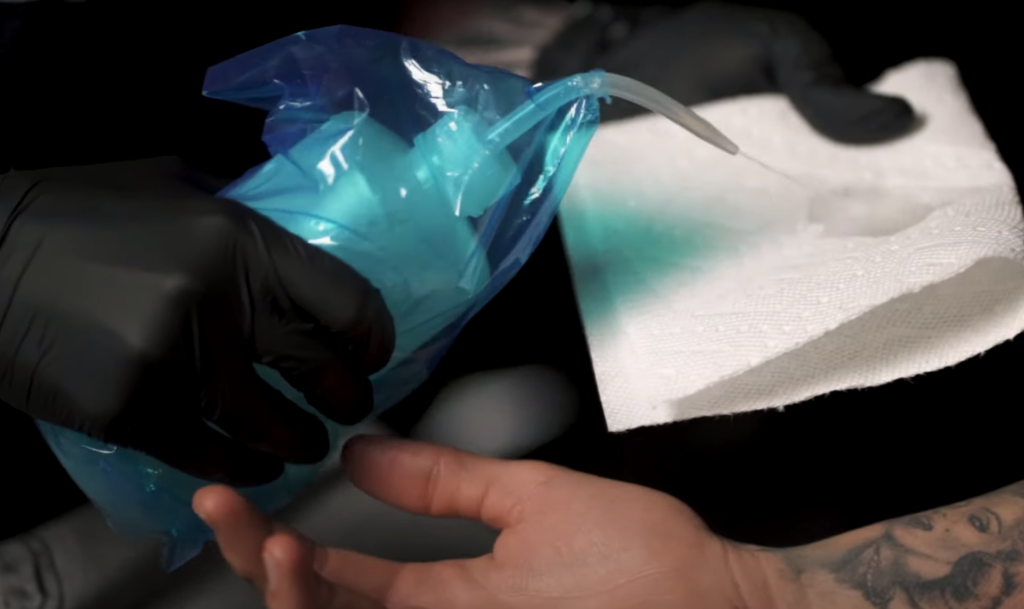
- What hurts more – a colored tattoo or a black tattoo?
There is a lot of debate over which type of tattoo hurts more – color or black. While there is no definitive answer, it seems that color tattoos may be more painful because they require multiple passes with the needle. Black tattoos generally only require one pass, so they tend to be less painful overall.
Of course, pain is relative and everyone experiences it differently. Some people report that color tattoos are less painful than black ones, while others find the opposite to be true. Ultimately, it comes down to personal preference and tolerance for pain.
If you’re concerned about pain levels, talk to your artist beforehand. They will be able to give you a better idea of what to expect and help you choose a design that will be less painful.
Tattoos are a commitment and should be treated as such. If you’re considering getting a tattoo, make sure you do your research and choose an artist that you trust. Once you’ve decided to get inked, it’s important to take care of your new tattoo properly.
- How do you waterproof a tattoo for swimming?
There are a few things you can do to waterproof your tattoo for swimming:
- One is to apply a layer of petroleum jelly over the tattoo. This will create a barrier between the water and your skin;
- Another option is to use a waterproof bandage or tape. This will also keep the water from coming in contact with your tattoo;
- Finally, you can purchase a waterproof tattoo sleeve. This is a sleeve that goes over your arm and covers your tattoo. It is made of waterproof material and will keep your tattoo dry while you swim;
- Is it possible to over-moisturize a tattoo?
A little moisture is good for a healing tattoo, but too much can hinder the healing process. This is because excessive moisture can soften the scabs that are forming over the tattoo and cause them to fall off prematurely. If this happens, it can lead to infection or even loss of color in the tattoo. So how do you know if you’re over-moisturizing your tattoo?
Here are a few things to look out for [9]:
- Your tattoo starts to bleed or weep excessively;
- The area around your tattoo becomes red, hot, or swollen;
- You develop a rash or hives around the tattoo;
If you notice any of these signs, it’s best to stop moisturizing the area and allow it to dry out for a bit. You can also consult with your tattoo artist or doctor to get their opinion on the matter.
In general, it’s best to err on the side of caution when it comes to moisturizing a new tattoo. A little goes a long way, so you don’t need to slather on a ton of lotion or cream. Just apply enough to keep the area hydrated and let your skin do the rest.
Useful Video: How Soon Can YOU Swim AFTER Getting A NEW TATTOO?
References:
- https://www.healthline.com/health/body-modification/how-long-after-a-tattoo-can-you-swim
- https://www.chronicinktattoo.com/blog/how-long-after-a-tattoo-can-you-swim
- https://www.healthline.com/health/body-modification/how-long-after-a-tattoo-can-you-swim
- https://www.usms.org/fitness-and-training/articles-and-videos/articles/how-long-should-i-wait-to-swim-after-getting-a-tattoo
- https://tattify.com/how-long-after-a-tattoo-can-you-swim
- https://www.wikihow.com/Take-a-Shower-With-a-New-Tattoo
- https://www.allure.com/story/why-you-should-not-go-swimming-after-getting-a-tattoo
- https://authoritytattoo.com/is-chlorine-bad-for-tattoos
- https://www.savedtattoo.com/over-moisturizing-tattoo





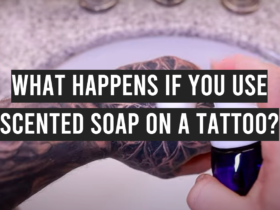
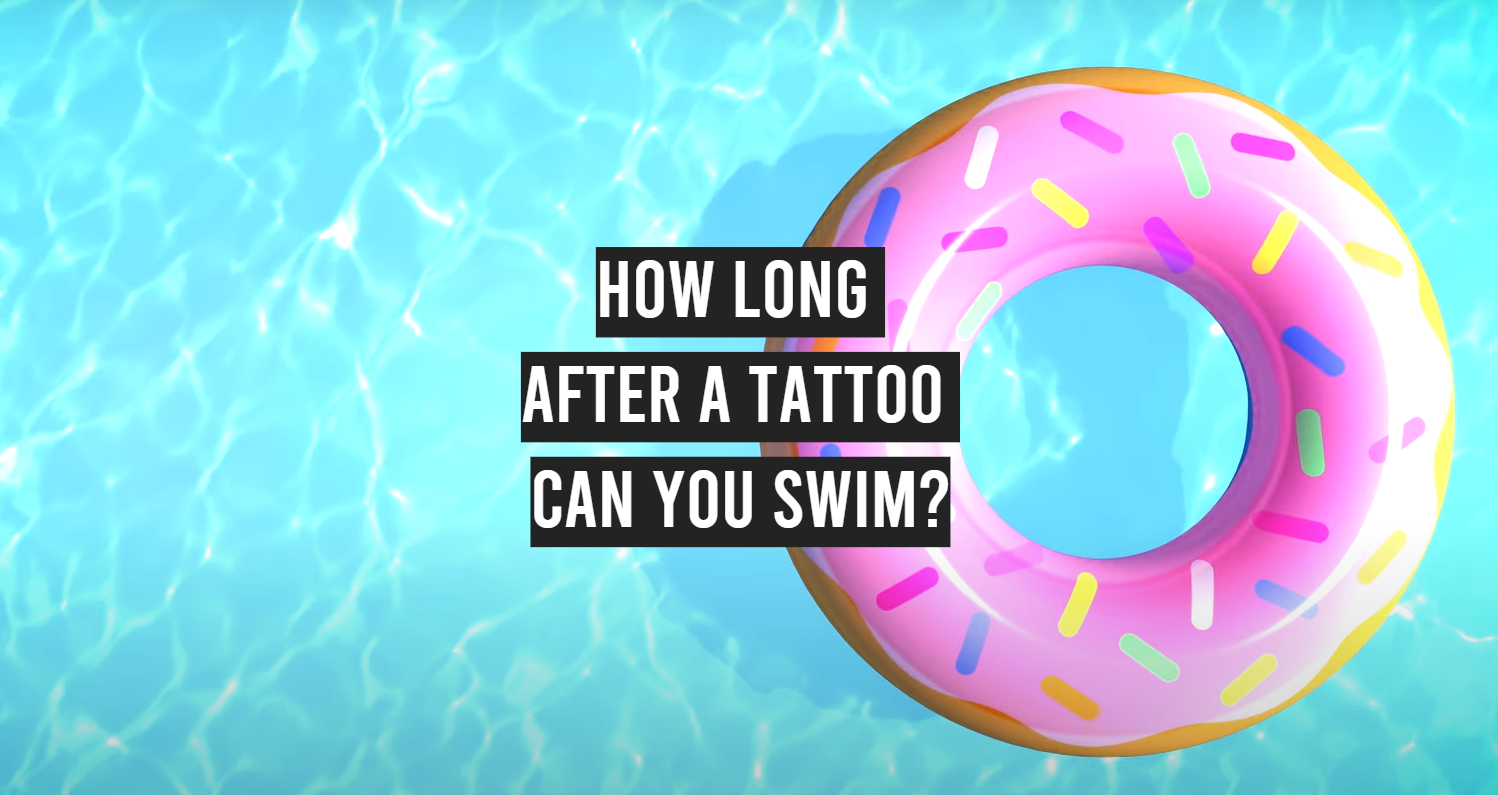




Leave a Review